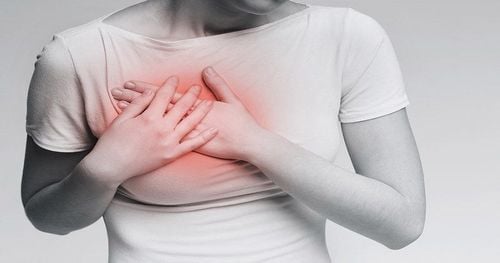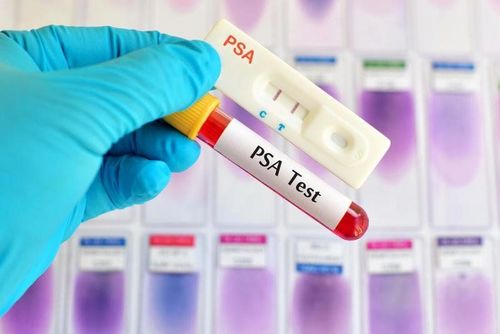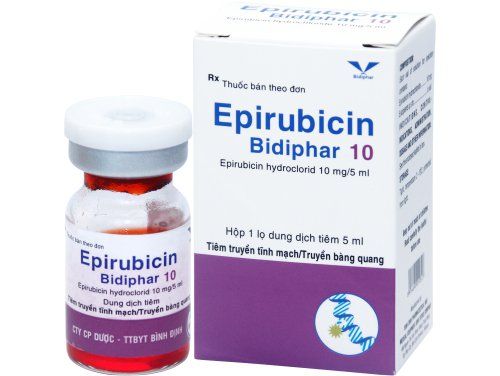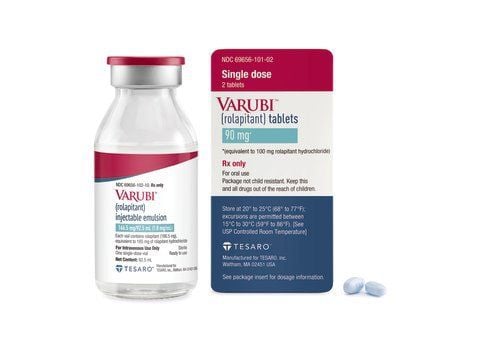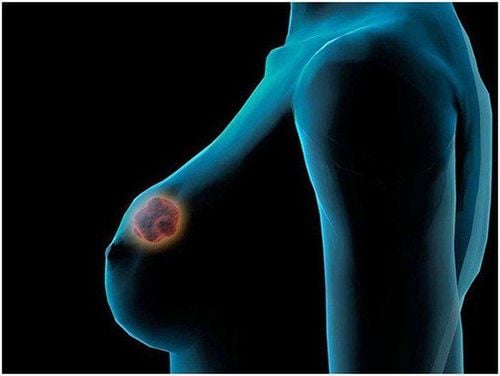This is an automatically translated article.
Breast cancer is a common cancer in middle-aged women. If detected early and treated promptly, the patient's survival rate is increased. So is breast cancer dead? How long does breast cancer live? The following article will help you understand more about the survival of patients with untreated breast cancer.
1. What is breast cancer?
Breast cancer occurs when harmful cancer cells (also known as malignant cells) are detected in the tissues of the breast, this condition usually develops from tubes inside the mammary gland. After a while, cancer cells can spread to the entire breast and move to other parts of the body (called metastasis).
1.1. Causes of breast cancer Currently, the cause of breast cancer is not known, however, there are many known risk factors to scientists, such as family history. have breast cancer. Any woman is at risk, from young to old, from rich to poor, regardless of skin color or ethnicity, and especially women aged 40 and over. Breast cancer can be effectively treated if detected early, so regular screening is a very important factor in increasing the rate of effective treatment and successful recovery.
1.2. Symptoms of breast cancer: Painless lump in the breast Itching with a persistent rash around the nipple Unusual discharge or bleeding in the nipple The skin above the breast is swollen and thickened The skin on the breast looks like an orange peel or wrinkled Nipples that are deeply receding or inward 1.3. Treatment of breast cancer The treatment of breast cancer and the patient's ability to recover depends on whether the cancer is just in the breast or the cancer has spread to other parts of the body. Other factors that can also help determine the treatment of the disease and predict the likely outcome of the disease, include the cancer classification, the specific characteristics of the breast cancer cells, and the presence of findings. find cancer cells in the other breast, the patient's age, menopausal status and general health of the patient.
Treatments include:
Surgery:
Breast-conserving surgery Mastectomy Radiation therapy
Systemic therapy
Chemotherapy
Hormone replacement therapy
Adjuvant therapy
Restoration Rehabilitation
2. Survival of treated breast cancer patients
2.1. How long does breast cancer live? And does breast cancer die? 80% of breast cancer patients can be cured if in the early stages, many patients still live well after decades.
Breast cancer is a silent but dangerous disease, but if detected early, patients still have a chance to be cured. The survival time of breast cancer patients depends on many factors, the most important of which is the stage of the disease. When patients are detected at an early stage, the chances of successful treatment are higher and can prolong survival. Meanwhile, patients detected at a late stage of the disease with metastases to other parts are often difficult to treat, only symptomatic relief can be applied.
Relative survival rate is an estimate of the percentage of patients who will survive their cancer for a period of time after diagnosis, up to the time they die. Survival among cancer patients is compared to survival among people of the same age and race who have not been diagnosed with cancer.
Based on the most recent data, the relative survival rates for women diagnosed with breast cancer are:
91% at 5 years after diagnosis 84% at 10 years 80% at 15 years 2.2. Survival and diagnostic staging The stage at diagnosis is one of the most important factors affecting prognosis. The 5-year relative survival for breast cancer is:
99% for atopic disease 86% for regional disease 27% for patients diagnosed with metastatic cancer 2.3. Survival and Breast Cancer Type (HR/HER2) Breast cancer survival also varies by tumor type.
The 5-year relative patient survival rate is:
92% for HR+ / HER2- 89% for HR+ / HER2 + 83% for HR- / HER2 + 77% for HR- / HER2-
3. Survival of untreated breast cancer patients
3.1. Breast Cancer Stage Non-invasive breast cancer: Stage 0 breast cancer can also be described as “pre-cancerous”. If you have DCIS (Aneocarcinoma in situ), you can be pretty confident that you'll do just fine. DCIS has not spread to other agencies. What should be concerned is when an invasive cancer grows back in the area that was previously surgically removed for DCIS. This type of local recurrence really puts your life at risk. Fortunately, this doesn't happen often. Also, be aware that people who have had DCIS before have a higher risk of developing a completely new, invasive breast cancer.
Early stage of invasive breast cancer: Stage I invasive breast cancer has a high survival rate. The chance of dying from Stage I breast cancer within 5 years of being diagnosed is 1 to 5% if you follow the recommended treatments.
Stage II breast cancer is also considered the early stage of breast cancer. Your life-threatening risk is slightly increased compared to Stage I breast cancer. Overall, your life-threatening Stage II risk of breast cancer over the next 5 years is about 15%.
Late-stage breast cancer (more advanced cancer): Stage III breast cancer poses a higher risk to your life, with a 5-year survival rate of 72%. There are many individual and tumor-specific factors that can alter this survival rate.
Inflammatory breast cancer is a more worrisome Stage III breast cancer. Overall, the 5-year survival rate for inflammatory breast cancer is about 50%
Stage IV breast cancer means the cancer has spread beyond the breast to other organs or parts of the body. In general, these metastases are not considered curable. Treatments are meant to help people live longer with their cancer. This type of cancer carries a 75 to 80% risk of dying within 5 years.
3.2. Factors related to survival of untreated breast cancer patients Breast cancer "Triple negative" Breast cancer triple negative Breast cancer is considered a more aggressive type of breast cancer. It always requires chemotherapy. If you have triple negative breast cancer, your risk of dying is higher than the commonly cited standard statistic for a specific stage of breast cancer (Stages I - IV).
“HER2-Positive” breast cancer HER2-positive breast cancer is also more aggressive. But the good news is that we now have extremely effective, targeted chemotherapy and immunotherapy for HER2-positive cancers.
Breast cancer at a young age Women under 40 have a better chance of being diagnosed with more advanced breast cancer. In addition, the specific type of cancer that young women develop has a greater chance of being aggressive (eg, estrogen receptor negative, triple negative, HER2 positive). Therefore, age is a relative risk factor for patient survival.
Failure to treat breast cancer causes patients to miss the "golden stage" of treatment, the cancer will develop to a late stage leading to difficult treatment, from no metastasis to metastasis or worse. is not treatable. Untreated breast cancer is clearly at a higher risk of death than those who have undergone treatment. All survival statistics are based on breast cancer that has undergone recommended treatment such as surgery, endocrine therapy, chemotherapy, and radiation. If you choose not to undergo standard treatment options, your chances of survival will be lower than the standard statistics of stage-by-stage survival.
Please dial HOTLINE for more information or register for an appointment HERE. Download MyVinmec app to make appointments faster and to manage your bookings easily.





